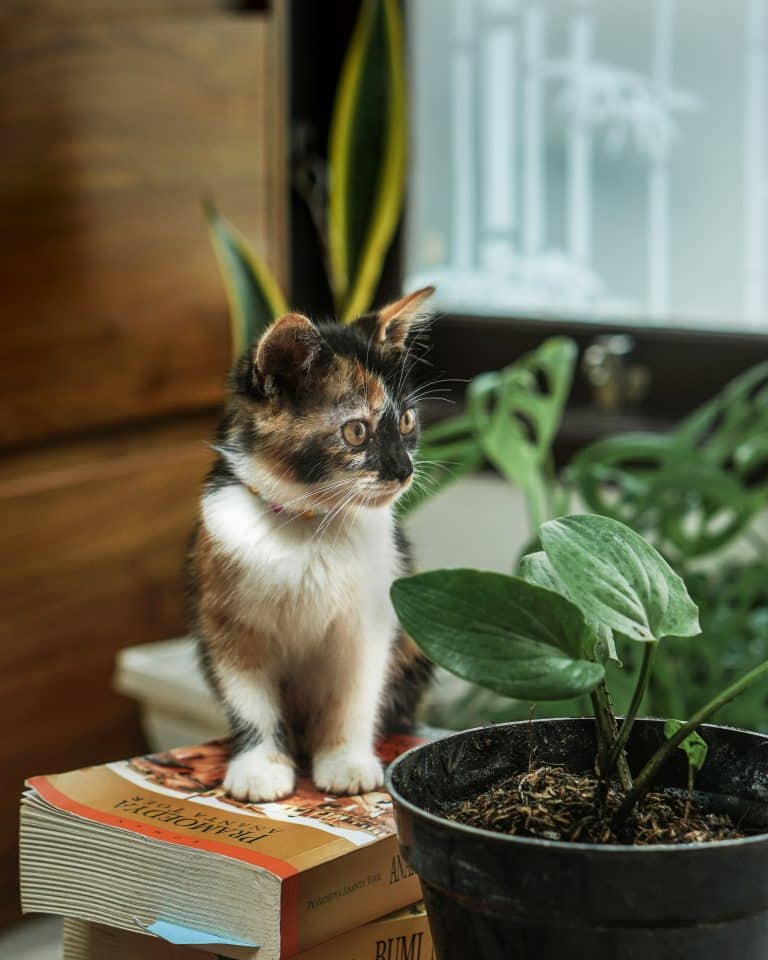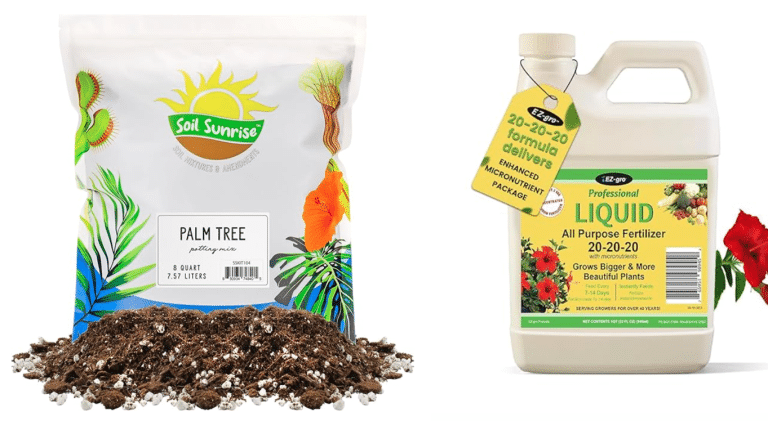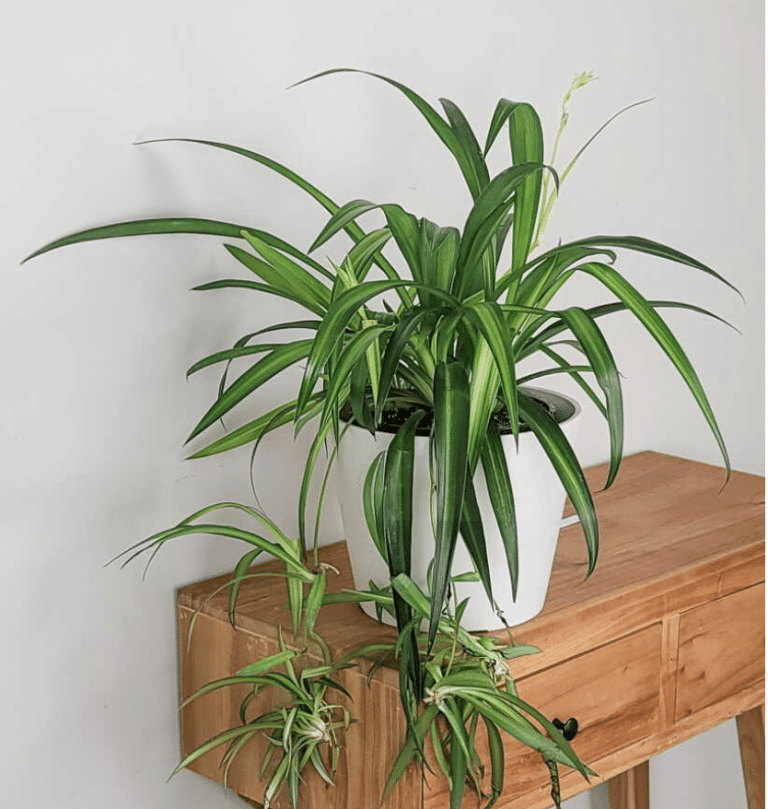How to Keeping Indoor Trees Healthy in Low Light
Keep indoor trees thriving in low light with expert tips on watering, pruning, lighting hacks & more—grown in our Brooklyn community home.
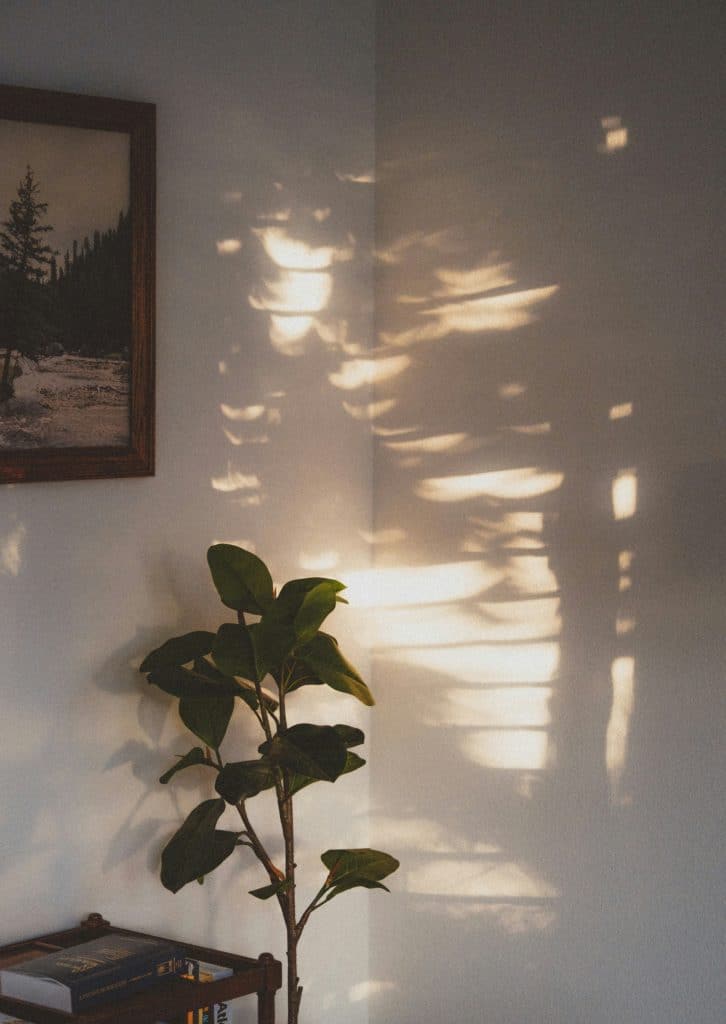
When you purchase through links on our site, we may earn an affiliate commission, which helps sustain our blog!
We love the way indoor trees conducive to low light transform a space, adding greenery and life in rooms with minimal sunlight. But keeping trees healthy in low light isn’t always easy—without proper care, they can become leggy, weak, turn yellow, or stop growing altogether.
But with the right adjustments, we’ve seen even the most light-sensitive trees adapt and thrive in our Brooklyn community home where we have at least a dozen of low light indoor trees. In this guide, we’ll walk through everything we’ve learned about maintaining indoor trees in dim environments, so your plants stay lush and vibrant year-round!
Understanding Low Light and Its Impact on Indoor Trees
What Qualifies as “Low Light” for Indoor Trees?
Not all low-light spaces are created equal. We’ve used a light meter to check different areas of our home, and the difference is shocking. A spot near a bright window can have 500–1,000 foot-candles of light, while a low-light corner often gets 50–100 foot-candles—a fraction of what most trees actually need.
Here’s how we define different light levels:
- Bright, indirect light: Within a few feet of a window, filtered through sheer curtains
- Medium light: A bit further from a window but still in a well-lit room
- Low light: No direct sun, only ambient daylight or artificial light
If we need to turn on a light to comfortably read a book during the day, the room is likely too dark for most trees to thrive.
How Low Light Affects Photosynthesis and Growth
Trees need light to photosynthesize—it’s their way of making food. When they don’t get enough, everything slows down. We’ve seen trees in low light develop weak, stretched-out growth, lose their deep green color, or simply stop growing altogether. Some plants adapt better than others, but even the hardiest low-light trees still prefer more light when they can get it.
A few things we’ve noticed when our trees don’t get enough light:
- New leaves grow smaller and paler than usual
- Growth becomes thin and leggy as the tree stretches toward the nearest light source
- Water takes longer to dry out, increasing the risk of root rot
If a tree isn’t producing new leaves during its growing season (spring and summer), it’s usually a sign that it’s not getting enough light to support growth.
Differences Between Slow Growth and a Struggling Tree
Some trees naturally grow slower than others, but there’s a difference between slow growth and a tree that’s barely hanging on. We had a Parlor Palm that didn’t put out new leaves for months, but it looked healthy—deep green, no yellowing, no weak stems. That’s just slow growth.
But when we had a Ficus Audrey in low light, the leaves started dropping one by one. It wasn’t just slow—it was struggling. Other warning signs include:
- Consistent leaf drop (especially newer leaves)
- Brown or yellowing leaves with no other explanation (like overwatering)
- Branches thinning out or sections dying off
We’ve learned that moving a struggling tree to a brighter spot—even if it’s not “perfect” light—makes a world of difference. If we can’t move it, supplementing with a grow light is usually our next step.
Read also: common problems with low light indoor trees.
Choosing the Right Trees for Low Light Conditions
Why Some Trees Struggle More Than Others in Dim Environments
We’ve made the mistake of assuming that all “houseplants” can adapt to low light. That’s not the case. Trees that evolved in open, sunny environments—like citrus trees, olive trees, or most Ficus varieties—struggle when they don’t get enough light.
Some common problems we’ve seen when trying to grow sun-loving trees in low light:
- Ficus Audrey and Fiddle Leaf Fig – These can tolerate lower light, but they get finicky. They drop leaves constantly if they don’t get enough brightness.
- Norfolk Island Pine – We lost one after assuming it could sit in a dim corner. It needs bright, indirect light to stay healthy.
- Money Tree (Pachira aquatica) – It tolerates low light for a while, but eventually, it starts stretching and looking sad.
If a tree naturally grows in a rainforest understory (like Dracaenas and Parlor Palms), it’s more likely to do well in our homes with limited light.
How to Assess Your Space Before Choosing a Tree
Before bringing a new tree home, we’ve started doing a quick light assessment of the space. We ask ourselves:
- What direction do the windows face? North-facing rooms get the least light, while east- and west-facing ones offer more indirect brightness.
- How far from the window will the tree sit? Even a low-light tree does better within 5–10 feet of a window.
- Can we supplement with a grow light if needed? If the answer is no, we only choose trees that truly thrive in dim conditions.
We’ve found that choosing the right tree for the space before we buy saves a lot of disappointment later.
Maximizing Natural Light for Your Indoor Trees
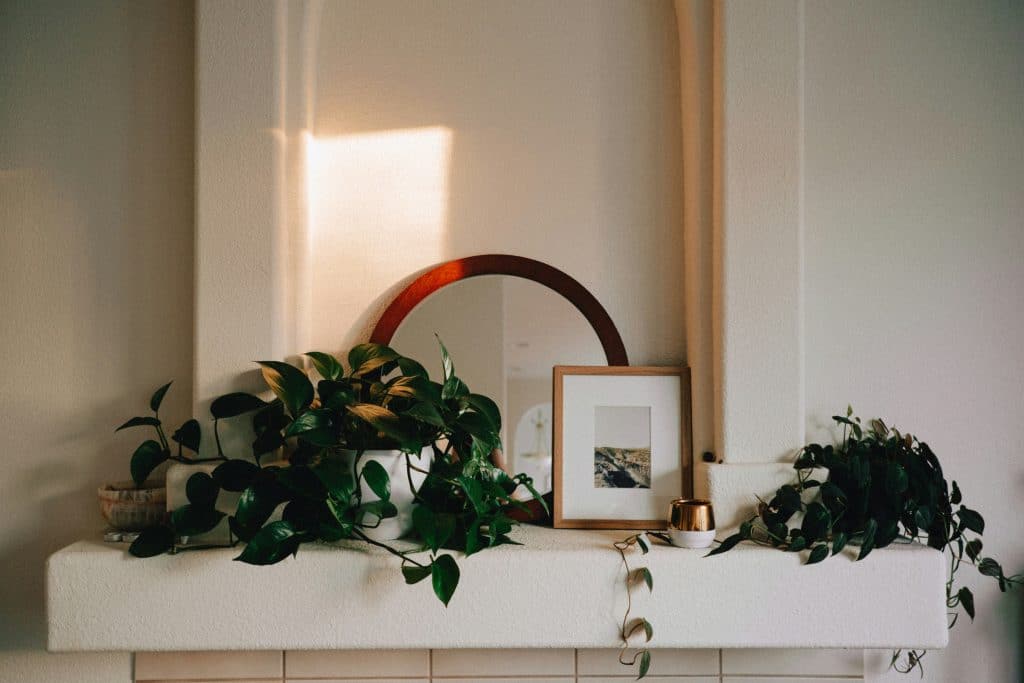
Best Placement Strategies Near Windows and Reflective Surfaces
When placing trees in low-light rooms, we always aim to get them as close to a light source as possible—without exposing them to direct sun that could scorch their leaves.
Some tricks that have worked for us:
- Placing trees within 3–5 feet of a window – Even if a tree can survive in darker corners, it’ll grow better near a window.
- Using sheer curtains to filter harsh light – We’ve found that too much direct sun can stress some low-light trees, so a sheer curtain creates the perfect soft glow.
- Rotating trees every few weeks – This prevents them from growing lopsided as they reach for light.
If we absolutely have to put a tree in a darker spot, we make sure it’s one of the true low-light champions, like the Cast Iron Plant.
Using Mirrors to Amplify Available Light
This is a game-changer! We started placing mirrors behind or beside our trees in low-light rooms, and it made a noticeable difference in their growth. The mirror bounces light from nearby windows, creating a brighter environment without needing grow lights.
Some mirror placement tips:
- Position mirrors across from a window to reflect natural light into the room.
- Use metallic or glossy surfaces (like white walls or reflective furniture) to help scatter more light.
- Experiment with angles – We’ve moved mirrors around until we found the best position for each plant.
This little trick has helped our Parlor Palm stay healthy way farther from a window than we thought possible.
Also read: our guide to styling low light indoor trees.
Keep Windows Clean Makes a Difference
This one is a no-brainer. This not only lets more light in, it’s also just aesthetically beautiful to see plants before a clear window. Not to mention its just healthy all around 🙂
Pruning and Maintenance to Keep Trees Strong
How Pruning Encourages Fuller, Healthier Growth
The first time we pruned one of our Dracaenas, we were nervous—what if we cut off too much? But within a few weeks, new shoots started popping up right below the cut, making the tree look fuller than ever. That’s when we realized: pruning isn’t just about removing dead leaves; it’s about redirecting the tree’s energy to where it can grow stronger.
Here’s what we’ve noticed after consistent pruning:
- Trees grow more compact and bushy instead of tall and stretched out.
- Weak, thin branches get replaced by thicker, stronger stems.
- The tree focuses energy on healthy growth rather than maintaining weak, struggling branches.
Pruning also improves airflow, reducing the chances of fungal growth—something we’ve had to deal with in humid summers.
Removing Weak, Leggy Stems to Strengthen the Tree
One of the biggest problems with low-light trees is leggy growth. When trees don’t get enough light, they stretch toward the nearest source, leaving long gaps between leaves. This makes them look sparse and flimsy instead of full and vibrant.
What’s worked for us:
- Trimming back stretched-out stems by cutting just above a leaf node (that’s where new leaves will grow).
- Removing dead or yellowing leaves as soon as we see them, so the tree doesn’t waste energy trying to save them.
- Notching for trees like Fiddle Leaf Figs and Dracaenas—instead of cutting a branch off completely, making a small cut halfway through the stem encourages new side shoots.
It took us a while to get comfortable with pruning, but once we saw the results, we realized it’s one of the easiest ways to help a low-light tree stay strong.
Best Times of Year to Prune Low-Light Trees
At first, we thought pruning could be done whenever, but timing makes a difference. We’ve had the best success pruning in spring and early summer—that’s when trees are naturally in their growth phase and bounce back faster.
Here’s what we follow now:
- Spring & early summer: Best time for shaping and encouraging new growth.
- Late summer & fall: Light pruning only, removing dead leaves or weak stems.
- Winter: We avoid major pruning since trees are usually semi-dormant.
When to Use Artificial Lighting and How to Do It Right
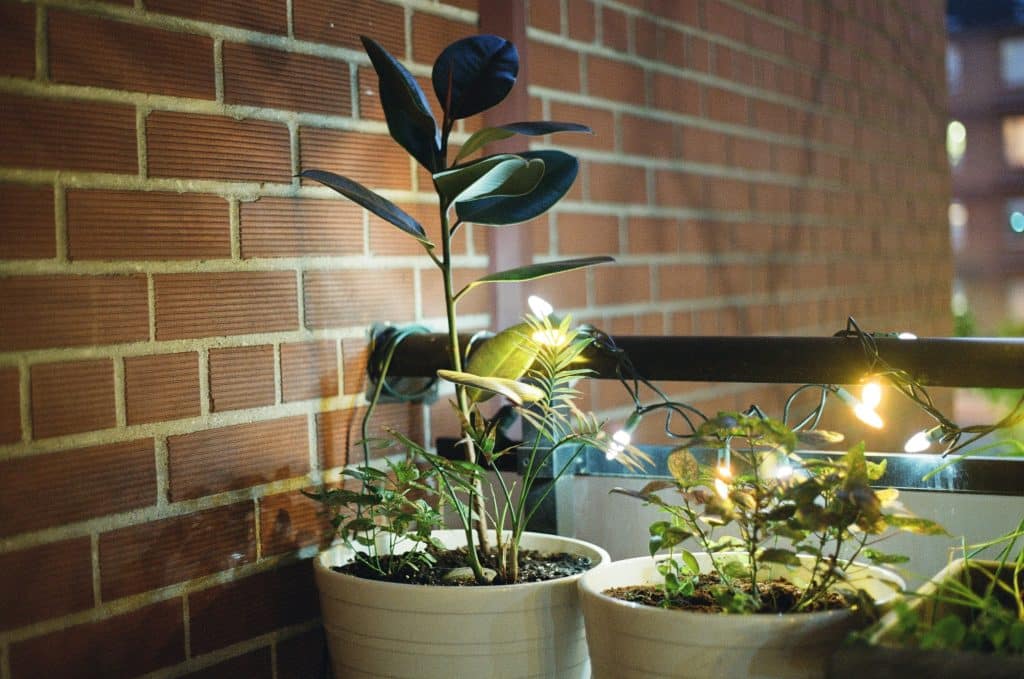
Signs Your Tree Needs Supplemental Lighting
There are a few clear indicators that an indoor tree isn’t getting enough light:
- Slow or no new growth – If months go by and your tree hasn’t pushed out a single new leaf, it might not be getting enough energy from the light it receives.
- Leggy, weak stems – If your tree is growing long, thin branches with widely spaced leaves, it’s reaching for more light than it’s getting.
- Yellowing or dropping leaves – Sometimes mistaken for watering issues, persistent leaf drop can be a sign of light deficiency.
- Dark corners or north-facing rooms – If your tree is sitting in a dim spot, it’s likely struggling. Even low-light trees need some brightness to stay healthy.
Best Types of Grow Lights for Indoor Trees
Not all grow lights are created equal. Do not buy the basic household LED bulbs at first—they don’t provide the full spectrum of light that plants actually need. After some trial and error, we figured out what works best.
Here’s a breakdown of different options:
- Full-Spectrum LED Grow Lights – These mimic natural sunlight and work for all types of indoor trees. They’re energy-efficient and last for years.
- Fluorescent Lights (T5 or T8 Bulbs) – These used to be the standard for plant lighting, but they don’t last as long as LEDs. Still, they can work well for smaller trees.
- Incandescent or Regular LED Bulbs – Not ideal. Incandescent bulbs give off too much heat, and standard LED bulbs don’t provide the right wavelengths for photosynthesis.
Proper Placement and Timing to Mimic Natural Light Cycles
Once we got a grow light, we thought we could just turn it on and let it run all day. But placement and timing matter just as much as the type of light.
Here’s what we’ve learned:
- Keep the light 12–24 inches from the tree – Any closer, and the leaves could scorch. Any farther, and the light loses effectiveness.
- Run the light for 8–12 hours a day – This mimics natural daylight cycles without overstimulating the plant.
- Use a timer – We set ours to turn on in the morning and off in the evening, keeping the schedule consistent.
One thing we have learnt: Not Leaving the grow light on 24/7. We thought more light = faster growth, but it actually stressed out the plant. Just like us, trees need a rest period!
Read also: how tall to do low light indoor trees get.
Preventing Common Problems in Low-Light Trees

How to Stop Leggy Growth and Weak Stems
Leggy trees were one of our biggest frustrations. At one point, we had a Dracaena that was so stretched out, it barely looked like a tree anymore—it was just a tall, thin stalk with leaves only at the top.
Here’s how we’ve stopped leggy growth:
- Move the tree to a brighter spot, even if it’s just a little closer to a window.
- Rotate the tree every couple of weeks so all sides get even light exposure.
- Prune back weak, stretched-out stems to encourage denser growth.
- Use a grow light if there’s no way to increase natural light.
We’ve also noticed that over-fertilizing in low light can make legginess worse. The tree stretches to use up excess nutrients but doesn’t have enough light to support healthy growth.
Preventing Yellowing and Dropping Leaves
At first, we thought yellowing leaves meant we were underwatering—but with low-light trees, it’s often the opposite. Since the soil stays damp longer, overwatering becomes a serious issue.
What’s worked for us:
- Watering less frequently – We let the top few inches of soil dry out before watering again.
- Checking for root rot – If a tree is dropping multiple leaves at once, we take it out of the pot and inspect the roots. Any mushy, dark roots need to be trimmed.
- Wiping down leaves regularly – Dust can block what little light the tree is getting, slowing photosynthesis even more.
We’ve also learned that some yellowing and leaf drop is just normal. Older leaves at the bottom of the tree will eventually fall off to make room for new growth—it’s only a problem if it’s happening excessively.
Read also: our guide to the best pots for low light trees.
Early Signs of Fungal Issues and Pest Infestations
Low-light trees attract more pests than we expected, especially if humidity is high. We once had a Rubber Plant that sat near a drafty window and barely got any sun. Within weeks, it was covered in spider mites—those little guys love dry, low-light conditions.
Here’s how we keep pests and fungus under control:
- Increase airflow – A small fan near the tree prevents stagnant air, which pests and mold thrive in.
- Use neem oil or insecticidal soap – We wipe down leaves regularly to keep spider mites, scale, and mealybugs away.
- Top-dress soil with cinnamon – This sounds strange, but cinnamon is a natural antifungal. Sprinkling a little on the soil prevents mold growth.
If we ever see black spots or fuzzy white patches on the soil, we remove the top inch and replace it with fresh, dry soil. That’s usually enough to stop a minor fungal issue from spreading.
Read also: best soil and fertilizer for low light indoor trees
Conclusion
Keeping indoor trees healthy in low light takes a few adjustments, but it’s entirely possible! By selecting the right tree, maximizing available light, and fine-tuning your care routine, you can help your trees thrive even in dim spaces. If you’ve struggled with a low-light tree, don’t worry—we’ve all been there! With patience and the right approach, your tree can and will flourish!

